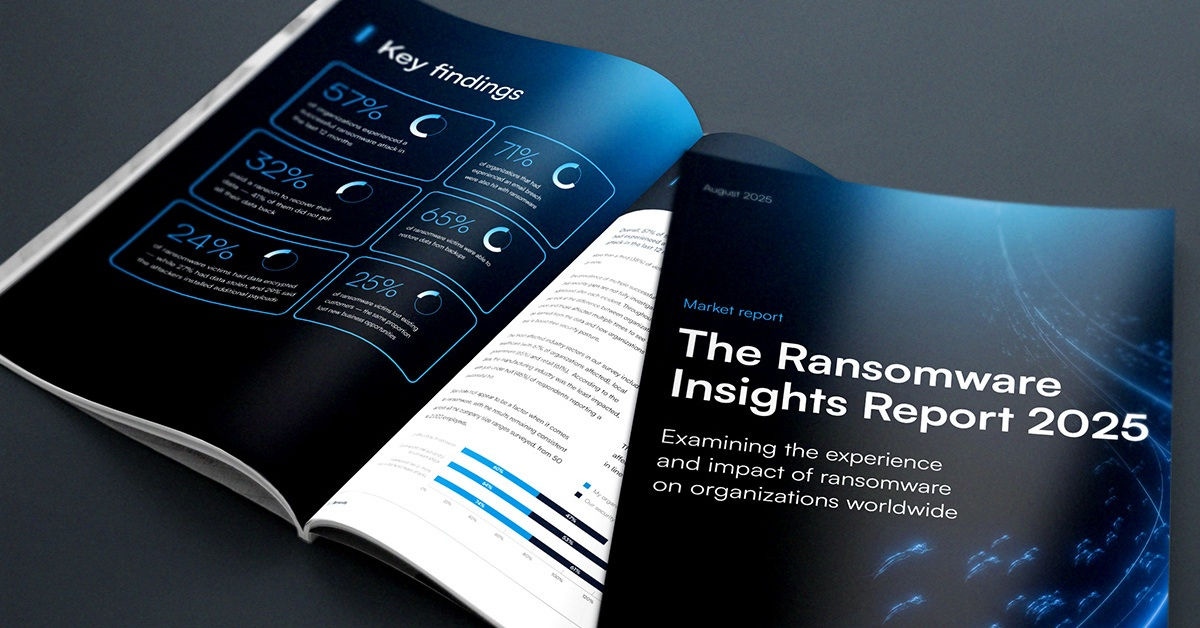
Os primeiros sinais de ataques de ransomware habilitados por IA emergem
O dia em que a inteligência artificial (IA) será usada para lançar autonomamente ataques de ransomware está agora um passo mais perto. Os investigadores de segurança da ESET relatam que descobriram uma ferramenta de ransomware de IA no VirusTotal, um serviço para analisar ficheiros e URLs para detetar malware, que pode decidir por si só se deve exfiltrar, encriptar ou até destruir dados.
Apelidada de PromptLock, a ferramenta utiliza um modelo de linguagem disponível gratuitamente da OpenAI para gerar scripts Lua maliciosos em tempo real para executar várias tarefas. Desde que foi descoberta, um grupo de professores, cientistas de investigação e estudantes de doutoramento na NYU Tandon School of Engineering veio a público confirmar que carregaram o protótipo, que apelidaram de Ransomware 3.0, para o VirusTotal durante os testes.
A equipa da NYU publicou um artigo de investigação que descreve como o protótipo de malware que desenvolveram como prova de conceito utiliza modelos de linguagem de grande escala (LLMs) para planear, adaptar e executar autonomamente um ataque de ransomware. Embora ainda não tenha sido descoberto que o PromptLock esteja a ser utilizado em campo por cibercriminosos, poderá ser um prenúncio de uma nova vaga de ataques lançados por máquinas em vez de adversários humanos.
O artigo de investigação da NYU surge na sequência de um artigo de investigação da Carnegie-Mellon University (CMU) que anteriormente demonstrou como os LLMs também podem ser ensinados a planear e executar autonomamente ciberataques no mundo real contra ambientes de rede de nível empresarial.
Defender contra ataques potenciados por IA
As implicações de toda esta investigação para os profissionais de cibersegurança são profundas. A questão agora é mais sobre quando, em vez de se, os cibercriminosos irão estabelecer um serviço de ransomware baseado em tecnologias de IA agente que utilizam LLMs para identificar vulnerabilidades, determinar a melhor forma de explorá-las, criar o código necessário e orquestrar o ataque real em questão de minutos. As equipas de cibersegurança que já estão a ter dificuldades em defender-se de ciberataques serão em breve sobrecarregadas por ondas de ciberataques que irão custar muito pouco aos adversários para lançar.
Claro, a única forma de combater fogo com IA será com IA. As organizações, estejam prontas ou não, vão precisar de investir em plataformas de IA que possam responder à velocidade das máquinas aos ataques lançados por outras máquinas. Sem essa capacidade, um ataque bem-sucedido será capaz de causar quantidades incalculáveis de danos em poucos segundos. Os profissionais de cibersegurança simplesmente não serão capazes de responder rapidamente o suficiente para limitar o alcance do raio de explosão de uma violação sem depender de IA para detetar e frustrar ataques em tempo real.
O desafio, como sempre, é encontrar o financiamento necessário para adquirir as ferramentas e plataformas de AI que serão exigidas. Não há dúvida de que os orçamentos de cibersegurança continuarão a aumentar, mas dado quão fundamentalmente o cenário de ameaças está prestes a mudar, eles podem não estar a crescer rápido o suficiente para acompanhar. Isso pode não ser uma conversa fácil de ter com os líderes empresariais e de TI, mas os factos são os factos. Afinal, como os profissionais de cibersegurança bem sabem, a única coisa pior do que gastar mais dinheiro em cibersegurança é um ciberataque que paralisa o negócio ao ponto de não gerar nenhuma receita.

O Relatório de Perspetivas sobre Ransomware 2025
Principais conclusões sobre a experiência e o impacto do ransomware nas organizações em todo o mundo
Subscreva o Blogue Barracuda.
Inscreva-se para receber destaques sobre ameaças, comentários do setor e muito mais.

Segurança de Vulnerabilidades Geridas: Remediação mais rápida, menos riscos, conformidade mais fácil
Veja como pode ser fácil encontrar as vulnerabilidades que os cibercriminosos querem explorar





